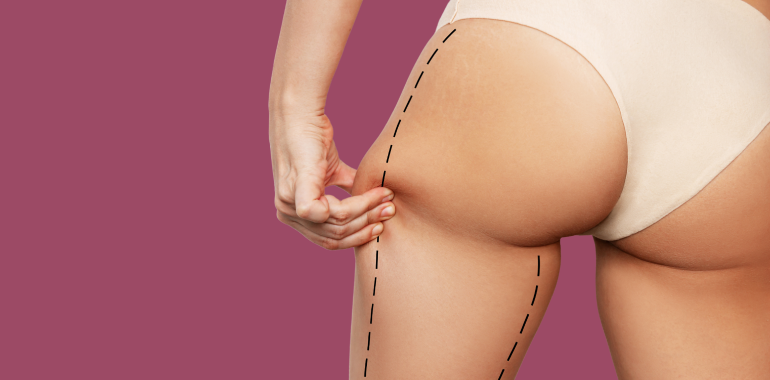Table Of Contents
Opening on How Long Does It Take To Get into Ketosis
On a Keto diet, you consume carbs so your body can tap into the glycogen stored in muscles and other areas for energy. This eating plan focuses on fat and protein while keeping carb intake low.
Keto works this way: you stop all carb intake for a specific time, and your body uses the glycogen already stored in muscle and liver. Once the glycogen has been used up, your body will enter ketosis, a metabolic condition.
Excited to discover the mysteries of how fast do you lose weight on keto? Perhaps you’ve tackled your adventure. Are you interested in when you’ll witness changes?
You’ve come to the spot! In this concise piece, we’ll delve into the process of entering ketosis—a stage that turns your body into a fat-burning machine. It’s not a matter of reducing carbohydrates; it involves grasping your body’s rhythm and fine-tuning it for optimal functioning.
Also, read – Are Eggs Keto Superfood? It’s Time to Rethink!
How Many Carbs per Day on Keto Female Normality? Learn to Control Your Macros
For a woman who is keen to keep her body in ketosis while on a keto diet, the daily amount of carbs that one is allowed to consume is roughly between 20 to 50 grams of net carb.
Net carbs, obtained by deducting fiber from the total carbs, are more than how many calories on a keto diet female for holding ketosis as fiber doesn’t affect the body’s blood sugar level.
- Initiating Ketosis: Your body’s glycogen stores are used up when you eat 20-50 grams of net carbs. This depletion of glycogen forces the body to switch to burning fat as the next energy source, thereby initiating ketosis.
- Sustaining Ketosis: This is because the carbohydrate doesn’t exceed a specific level, which would cause fluctuations of ketones in the blood that are central to the metabolic changes of the keto diet.

How Many Calories on Keto Diet for Males Safely Standart?
Begin by figuring out your Basal Metabolic Rate (BMR), the amount of calories your body requires while at rest to keep up with bodily functions.
After that, modify the BMR according to how active you’re. The Harris Benedict Equation is a way to make this adjustment:Sedentary (little or no exercise) BMR x 1.2 Lightly active (light exercise/sports 1-3 days/week) BMR x 1.375 Moderately active (moderate exercise/sports 3-5 days/week) BMR x 1.55 Very active (hard exercise/sports 6-7 days a week) BMR x 1.725 Super active (tough exercise/physical job) BMR x 1.9
For males, the typical keto calorie deficit range might be as follows:
- Sedentary Lifestyle: 1,800-2,200 calories per day
- Moderate Activity: 2,200-2,600 calories per day
- High Activity: 2,600-3,000+ calories per day
Patience Pays Off: How Long Does Lose Weight on Keto Take?
The timetable for losing weight while following the keto diet varies from person to person and is influenced by a range of factors, such as starting weight, overall metabolic health, adherence to the plan, and individual bodily reactions.
Initial Stage of Rapid Weight Loss
Many individuals notice weight loss during the week or two of adopting a keto diet. This initial decrease in weight is mainly attributed to shedding water weight. By cutting back on carbohydrates, the body exhausts its glycogen reserves. Glycogen binds with water in the muscles and liver; hence, the associated water is expelled when used up.
- You may lose 2-10 pounds (approximately 1-4.5 kg) in the first week or two.
Phase of Steady Weight Loss
Following this stage, the rate of weight loss usually decreases to a consistent level. In this period, shedding fat is the method of reducing weight.
- A safe and sustainable rate of weight loss is about 1-2 pounds (0.5-1 kg) per week.
Many factors, such as activity, calorie consumption, and metabolic rate, can cause some people to lose somewhat more weight while others lose less.
Your Predictable Keto Weight Loss Timeline
There is no set of time that a person is required to spend on the keto diet. But in this case, people have attempted to be uniform and seek to eat the correct type of food. Once everything has been followed to the letter, some changes should manifest in the first 5 – 10 days for most individuals.
How Fast Can You Lose Weight on Keto?
There isn’t a formula for this. Even though the keto diet has shown outcomes for some individuals quickly, it may not yield results for everyone. The extent of weight loss you experience during this period predominantly hinges on how you can achieve ketosis.
Generally speaking, shedding pounds is possible if you reach ketosis within a span of time, a few days to weeks.
Also, read – Exciting Keto Breakfast Ideas to Wake Up Your…
Keto Weight Loss First Week
The average weight loss on keto in a month, especially a week, depends on several factors. As we have stated above, most people start experiencing results of the keto diet within the first week, and we have seen several testimonies of these on platforms such as Reddit and Quora.
But this is often not the case; most of the time, people do not experience this kind of weight loss because the glycogen stored in the muscular tissues and liver is exhausted.
- The initial key factor as to why such a thing occurs at that time is the human body’s keto water weight loss. It has excellent amounts of fats, which are fats; therefore, at times, as you starve the carbs, the first thing that is roasted off or evaporated is the water.
The bottom line is that most people’s first-week weight loss results from a keto diet are related to water loss, not actual depletion of glycogen.
However, this is the initial process of losing weight, and for most people, the outcome shows a change in their weight—particularly those big-bodied people with a lot of water stored in their bodies.
Studies have also shown that for most people, at least 0.3 – 6kg is lost every week during a ketogenic diet if all the rules adhere to the latter.
How to Speed up Weight Loss in Ketosis? Boost Your Results
1. Use apps or food diaries to track your calorie consumption and avoid going overboard on your portion sizes.
2. This should be done considering portion sizes, most importantly for foods that are rich in calories, such as nuts and dairy products.
3. Not only does it expel calories, but it also keeps muscle mass intact and this is a factor that boosts metabolism. Some exercises, like weight lifting, can help build muscle mass, which in turn helps burn calories even when you are lazy.
5. For instance, jogging, cycling, or swimming assist in building a caloric imbalance.
6. As mentioned earlier, adults should drink not less than 8 glasses of water daily or 2 liters.
7. Take enough electrolytes (sodium, potassium, magnesium) to avoid dehydration and support general well-being.
8. You should ensure that you consume an ideal ketosis level for weight loss at least 70-75% of your daily calories from fats.
9. To preserve muscle tissue, it’s recommended that you ingest about 20-25% of your daily calorie intake from protein.
10. On a ketogenic diet, saturated fats should be limited to about 5-10 percent of daily caloric intake or no more than 20-50 grams of net carbs per day.
11. To alleviate stress, one can practice some form of exercise such as meditation, yoga or deep breathing exercises.
Does Keto Work for Everyone – One Size Fits All?
Each person has a makeup, metabolic rate, and response to dietary changes. Some people may see better outcomes on the keto diet than others.
- The keto diet can be tricky to follow because it has strict intake requirements. If people fail to follow the diet, they may not attain the desired outcome and have slow weight loss on keto.
- Hypoglycemia, kidney disorders, or liver diseases are other factors that would require a change in the keto diet or complete elimination of this diet plan.
- Without careful planning, a keto diet could lead to deficiencies in necessary nutrients like fiber, vitamins, and minerals. This could potentially result in health issues, underscoring the importance of a well-balanced approach.
- The keto diet’s effectiveness may vary for those who do intensity or endurance exercises due to limitations in using fat for energy during workouts.
Also, read – 75 Medium Challenge for Mind, Body, and Spirit
Why Do You Lose Water Weight First? Find Out About Initial Drop
When you kick off a diet or exercise routine, you might observe a drop in weight in the initial days or weeks. This immediate weight loss is often attributed to a decrease in water weight rather than fat.
- A key factor contributing to weight loss is the depletion of glycogen reserves in your system. Glycogen binds with water. Specifically, each gram of glycogen is paired with 3 to 4 grams of water.
When you cut back on carbohydrates or amp up your activity, your body begins utilizing these glycogen reserves for fuel. As glycogen breaks down, the bound water is. Subsequently flushed out through urine. This mechanism leads to a drop in body weight, commonly known as “water weight,” and influences how long to reach ketosis.
- Habit modifications, especially those involving sodium intake, can also contribute to shedding water weight.
Excessive sodium intake prompts water retention within the body; conversely, reducing sodium intake encourages the release of stored water. When you transition to a diet that includes foods that are less processed, your sodium intake usually decreases, which can lead to a decrease in water weight.
Getting started on a diet often means creating a deficit by consuming calories your body requires to maintain its current weight. This deficit prompts your body to utilize its energy reserves, which initially deplete glycogen stores and result in water loss.
- Changes in hormones also impact weight loss.
Insulin affects the amount of water retained by the body. By reducing carbohydrate intake and creating a caloric deficit, insulin levels can be lowered, thereby reducing water retention.
- Engaging in activity causes the body to sweat more, losing water.
In the early stages of starting an exercise routine, significant amounts of water may be lost through sweat, contributing to the initial decrease in weight.
Realistic Goal-Setting on Average Weight Loss During Ketosis
When your body goes into ketosis, it changes from using glucose as its energy source to burning fat. How fast does keto work? This shift in metabolism typically starts after 3 to 4 days of consuming more than 50 grams of carbohydrates each day.
- Weight drop. During the first week, most people notice a rapid decrease in weight, often ranging from 2 to 10 pounds. This initial drop is mainly due to water loss as glycogen reserves are used up.
- Steady fat reduction. Following the phase, the rate of how much fat do you burn in ketosis usually levels off. On average, someone can anticipate losing around 1-2 pounds weekly. This consistent decrease reflects burning, which can be maintained over time by sticking to the diet.

Also, read – 21 Day Wall Pilates Challenge: Lean Against Limits
Flat Stomach Exercises Beginners Sets – Top 5 Complementary Moves
| Exercise | Instructions | Sets & Reps | Rest Between Sets |
| 1. Plank | Lie on your back with hands behind your head. Lift knees to a 90-degree angle. Bring right elbow to left knee while extending right leg. Alternate sides in a pedaling motion. | 3 sets of 20-30 seconds | 30-45 sec |
| 2. Bicycle Crunch | Start in a push-up position, forearms on the ground. Keep your body in a straight line from head to heels. Engage your core and hold this position. | 3 sets of 10-15 reps per side | 30-45 sec |
| 3. Leg Raises | Start in a push-up position, forearms on the ground.Keep your body in a straight line from head to heels. Engage your core and hold this position. | 3 sets of 10-12 reps | 30-45 sec |
| 4. Twists | Lie on your back with your hands under your hips. Keep legs straight and lift them to a 90-degree angle. Lower legs slowly without touching the ground. | 3 sets of 12-15 reps per side | 30-45 sec |
| 5. Mountain Climbers | Sit on the floor with knees bent and feet flat. Lean back slightly, keeping your back straight. Hold a weight or water bottle with both hands. Twist your torso to the right, then to the left. | 3 sets of 20-30 seconds | 30-45 sec |
***Here are some suggestions for the exercises:
Make sure your elbows are below your shoulders keep your hips level and look at a spot on the floor in front of you to keep your neck in a position.
Bicycle Crunch
Concentrate on using your abs to lift yourself instead of straining your neck, and move slowly and steadily rather than rushing through each repetition.
Leg Raises
Press your lower back into the floor to avoid any discomfort and control the movement as you lower your legs to prevent relying on momentum.
Twists
Keep your back rotated from the torso (not just arms) for better engagement of obliques.
Mountain Climbers
Hold a plank position while driving your knees toward your chest, with controlled movements to engage core muscles effectively.
William is from Canada, he is passionate nutrition & wellness writer. William understands that the topic of wellness is still not well understood, so his goal is to enlighten and teach people how to live healthier and happier in their bodies.










Thank you very useful material for everyone who research information about keto weight loss timeline and is starting the path of losing weight with this diet!
Hello, Charlotte👋
You’re very welcome! Best of luck on your journey with the keto diet – here’s to achieving your weight loss goals!